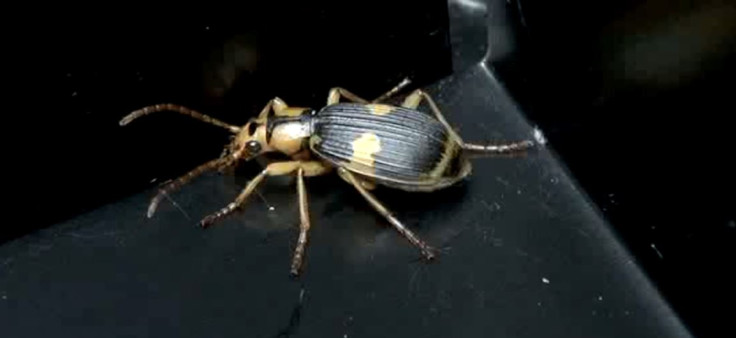Watch: Beetles cause toxic explosions inside toads to escape their stomachs
You don't want to mess with that beetle's juice.
Big toad vs tiny beetle, who would win? The answer seems obvious, but beware: in this animal take on David and Goliath, it looks like the insect has its very own way of surviving.
Scientists at the University of Kobe in Japan have released footage showing how a beetle can escape the stomach of a toad hours after being eaten.
Agricultural scientist Shinji Sugiura and colleague Takuya Sato looked at how some beetles manage to escape their predators' stomachs.
The team found that bombardier beetles produce a chemical that is toxic enough to get the toads to vomit and release the insect from its belly. The study was published in the Royal Society journal Biology Letters.
Throughout their evolutions, beetles have developed a number of defence mechanisms against predators such as horns, hair and chemical sprays.
When attacked or threatened, the bombardier beetle (Pheropsophus jessoensis) is known to emit an irritant made of hydrogen peroxide, hydroquinones and chemical catalysts in order to deter its predators.
Sugiura and Sato wanted to understand how these chemical defences helped the insect once it had been swallowed.
They collected bombardier beetles as well as Japanese common toads (Bufo japonicus) and stream toads (B. torrenticola) and filmed what happened when insect and amphibian met.
They found that bombardiers could still use their chemical sprays inside the toads' stomachs. The beetles release their hot chemicals from the tip of their abdomen, wait and then bam! an explosion ensues that forces the toad to throw up. These explosions are so strong they can be heard by humans.
Rather than killing the toads, the chemical spray forces them to vomit, releasing their prey in the process. All beetles escaped unscathed, albeit covered in a thick layer of stomach fluid.

In some instances, beetles were ejected within 15 minutes of being swallowed. In other tests, it took nearly two hours.
How they manage to survive the toads' digestive acids is still a mystery to Sato and Sugiura. That resistance could also be an evolutionary process, suggested Sugiara.
The escape plan does not work for all beetles, though. The study showed that larger specimens had a better chance of escaping predators' digestive systems, possibly because bigger beetles release more chemicals.
Stream toads were more vulnerable to the defensive sprays than common toads: 57.1% of stream specimens vomited the beetles but only 34.8% of the common ones did.






















